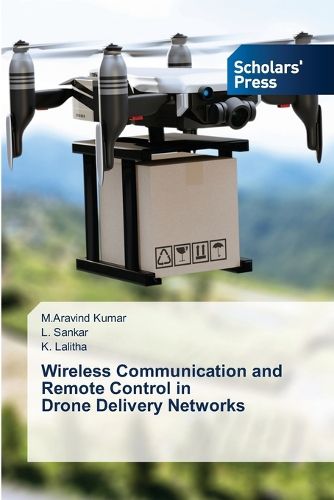Readings Newsletter
Become a Readings Member to make your shopping experience even easier.
Sign in or sign up for free!
You’re not far away from qualifying for FREE standard shipping within Australia
You’ve qualified for FREE standard shipping within Australia
The cart is loading…






Delivery drones, also known as unmanned aerial vehicles (UAVs), are revolutionizing the logistics and transportation industry by providing fast, efficient, and contactless delivery solutions. These autonomous or semi-autonomous aerial systems are increasingly used for last-mile delivery of packages, food, medical supplies, and other goods. With the integration of GPS, real-time data transmission, and obstacle avoidance technologies, drones can navigate complex environments and deliver goods directly to customers' doorsteps, often in a fraction of the time required by traditional methods. One of the key advantages of delivery drones is their ability to bypass ground traffic and reach remote or inaccessible areas, making them especially useful during emergencies or natural disasters. They also have the potential to reduce carbon emissions and overall transportation costs by minimizing reliance on fossil-fueled vehicles.
$9.00 standard shipping within Australia
FREE standard shipping within Australia for orders over $100.00
Express & International shipping calculated at checkout
Stock availability can be subject to change without notice. We recommend calling the shop or contacting our online team to check availability of low stock items. Please see our Shopping Online page for more details.
Delivery drones, also known as unmanned aerial vehicles (UAVs), are revolutionizing the logistics and transportation industry by providing fast, efficient, and contactless delivery solutions. These autonomous or semi-autonomous aerial systems are increasingly used for last-mile delivery of packages, food, medical supplies, and other goods. With the integration of GPS, real-time data transmission, and obstacle avoidance technologies, drones can navigate complex environments and deliver goods directly to customers' doorsteps, often in a fraction of the time required by traditional methods. One of the key advantages of delivery drones is their ability to bypass ground traffic and reach remote or inaccessible areas, making them especially useful during emergencies or natural disasters. They also have the potential to reduce carbon emissions and overall transportation costs by minimizing reliance on fossil-fueled vehicles.